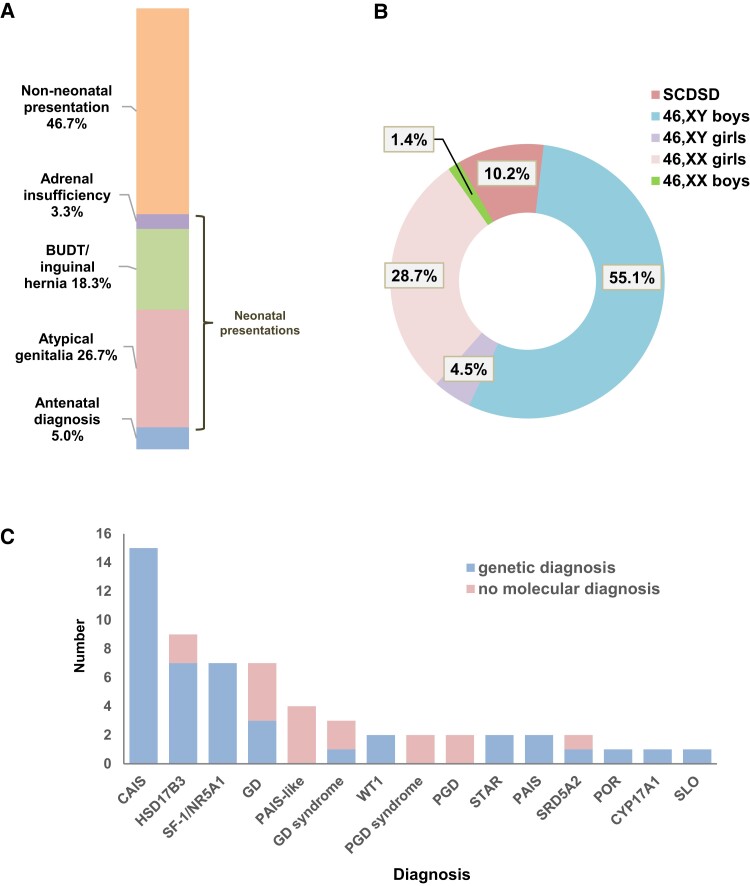Figure 4.
Presentation of 46,XY girls referred from London/South-East England. A, Mode of presentation for 46,XY girls (n = 60). B, Major DSD categories and sex assignment for children presenting with atypical genitalia at birth or in the neonatal period (n = 352). C, Range of genetic diagnoses for 46,XY girls (n = 60). Those children with complete or partial gonadal dysgenesis and additional features are grouped under “GD syndrome” and PGD syndrome,” respectively. “PAIS-like” represents children with clinical/biochemical features of PAIS but in whom no androgen receptor or other pathogenic variant was found yet. BUDT, bilateral undescended testes; CAIS, complete androgen insensitivity syndrome; CYP17A1, combined 17α-hydroxylase/17,20-lyase deficiency; GATA4, GATA-binding protein 4; GD, gonadal dysgenesis; HSD17B3, 17β-hydroxysteroid dehydrogenase type 3 deficiency; PAIS, partial androgen insensitivity syndrome; PGD, partial gonadal dysgenesis; POR, P450 oxidoreductase deficiency; SLO, Smith-Lemli-Opitz syndrome; SRD5A2, 5α-reductase type 2 deficiency; STAR, steroidogenic acute regulatory protein/congenital lipoid adrenal hyperplasia; WT1, Wilms tumor 1.

